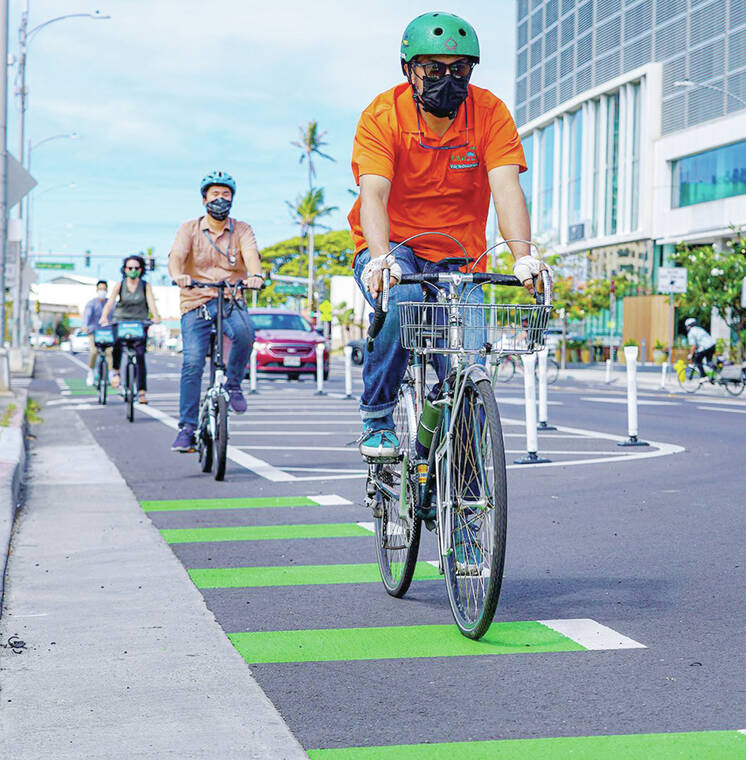LIHU‘E — The Hawai‘i Climate Commission, a multi-jurisdictional board formed to promote climate change adaptation and mitigation measures, has released three new reports analyzing the climate impacts of Hawai‘i’s driving habits and detailing recommended investments to promote walking, biking, rolling and transit as an alternative to car travel.
“We have a historic opportunity to collaborate and invest in more transportation choices across Hawai‘i with our state and local county partners,” said DLNR and Climate Commission Chair Dawn Chang. “The reports help illuminate how we can move forward together, our understanding of these issues, and what types of investments deliver the greatest impacts toward our clear energy goals.”
In the first report, Roadway Expansion and Vehicle Miles Traveled (VMT), the commission applied SHIFT — a nationwide calculator used to estimate long-term impacts of roadway expansion projects — to shape its recommendations for the state’s future infrastructure plans
Using this tool, the commission found that taking a “business-as-usual” strategy would likely result in a 10 percent increase in statewide VMT by 2030. To counter this, the commission presented five strategies that could, if implemented together, reduce the state’s VMT by 20 percent in that same time frame:
• Build future housing near locations people need to get to
• Adjust pricing for road usage and vehicle ownership
• Stop expanding highways — and potentially, start to remove them
• Redesign the streets to prioritize alternative clean transportation, such as buses, walking and biking
• Implement measures like remote work that decrease transportation demands
The second report, focuses on recent trends in car travel, found that Hawai‘i’s total vehicle miles traveled increased by 7.8 percent between 2009 and 2017, with rural household car travel increasing the fastest — an increase the commission suggested vould be attributed to a lack of alternative transport options.
Critically for the commission, the report also found that 70 percent of personal trips are five miles or fewer. The commission noted these trips, accounting for 15 percent of the state’s VMT, are “ripe for new modes” of transportation, if they are implemented safely and accessibly.
The final report, Investing in Transportation Choices, focuses on implementing near-term actions and strategies to reduce the need for car travel.
Several of the report’s seven recommendations, including developing a statewide VMT reduction target and ensuring development plans associated with land use are designed to expand transportation choices, were shaped in part by Kaua‘i’s existing Multimodal Land Transportation Plan. The county plan, adopted in 2013, outlines steps for Kaua‘i to increase on-island walking, biking and public transit by 2035.
Noting Kaua‘i’s robust approach to this transportation shift, the commission hopes such a program could be implemented statewide, arguing that doing so would make getting around safer, healthier, more reliable, more convenient and more affordable.
“Transportation costs are the fourth-largest expense for Hawai‘i residents, so it makes sense to invest in ways to increase choices to make it safer and easier to get around,” said Hawai‘i chief energy officer Mark Glick. “This is an opportunity to save households as much as $41,000 a year while reducing carbon emissions and supporting active and healthy lifestyles.”
•••
Jackson Healy, reporter, can be reached at 808-647-4966 or jhealy@thegardenisland.com.



can the county provide some bus shelters in Poipu area for hotel workers who want to use the bus? there on no chairs [except peoples donated used yard chairs] there is no cover- people need to sit in dry Guinea Grass in the hot sun or rain. I don’t think anyone will be riding their bikes from Lihue or Eleele to work in Poipu….. start with the basics please!!!!